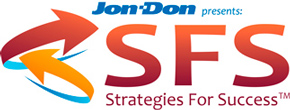 Do you like your job? Do your techs and office staff like their jobs? Do you know OR are you afraid to ask them? When someone recommends a book on motivation do you think it is another book with a cute title (Don’t Fire Them; Fire Them Up) and the same old “rah-rah” stuff that does not apply to your company?
Do you like your job? Do your techs and office staff like their jobs? Do you know OR are you afraid to ask them? When someone recommends a book on motivation do you think it is another book with a cute title (Don’t Fire Them; Fire Them Up) and the same old “rah-rah” stuff that does not apply to your company?
Dan Pink has written a different book about motivation titled Drive: The Surprising Truth about What Motivates Us. The difference in this book and others of the same genre is this one is built on science. Unfortunately as Pink states there is a mismatch between what science knows and what business does. Most would agree that hiring AND keeping quality employees is the most critical aspect for a small business owner.
Motivation has always come down to the “carrot or the stick” theory. We are motivated by money or punishment. Having spent 12 years of my life in Catholic school I know all about the stick motivation! Just as no one spends their entire life at one company any more, few people are motivated long term by punishment.
We now recognize two types of motivators intrinsic (from inside) or extrinsic (outside) incentives. After listening to Steve Toburen discussing how to sell Scotchgard you may get your techs fired up with monetary rewards. The first month everyone sells a lot of Scotchgard and makes a lot of extra money. (Make sure to use your Scotchgard Success Kit.)The second month the results slip a little and you may sweeten the pot. Unfortunately this can get expensive and eventually the program has diminishing returns. Rewards tend to narrow the focus and are difficult to maintain.
External rewards can work for a job that is totally controlled by management. If a tech has no control how a job is performed a reward may be beneficial. If the job has a creativity factor then an external reward may be detrimental. Creativity in a job means the person has some control over how they perform the job and that is a reward in itself or what Pink calls an “intrinsic motivation”.
Let’s look at this from the perspective of a restoration job. The tech has his WRT certification and understands psychrometry. As he takes his readings he has to determine the amount of equipment and its placement. After three days everything is dry and the customer is overjoyed. The tech leaves the job with a sense of accomplishment and feels pretty darn good. Paying the tech by the amount of equipment he placed may back fire as his focus is on the monetary reward not on how the job is best accomplished.
Two different types of rewards come into play. “If then” rewards are designed to reward. If you sell Scotchgard you may receive an extra 10% commission. “Now that” rewards are given unexpectedly for a job well done. John did a great job on the restoration job. He is not expecting anything but his manager gives him a $50.00 gift certificate for Outback Steak House so he can take his wife to dinner. It is important that the wife is involved because this job required her husband to be gone in the middle of the night. She also is being motivated and in turn reinforces her husband’s belief that he works for a great company. Positive feedback can have an enhancing effect on intrinsic motivation.
People normally tend to be either Type I (intrinsically motivated) or Type X (externally motivated). You are not born with either trait but become one or the other due to circumstances, experience, and content. If your whole work life you have been a toll collector on the Illinois tollways you are not likely to be Type I. Type I’s normally outperform Type X’s in the long run. In the short term extrinsic rewards can really deliver fast results. Corporate America is a classic example as they worry only about their quarterly results. This has led to some ugly results such as Enron.
This does not mean intrinsically motivated Type I’s don’t care about money. The employee’s base pay must be fair and equal to others in the company or in similar companies or they will become rapidly demotivated. They appreciate the additional commission they receive from selling Scotchgard but very likely get an additional reward knowing they have helped the customer keep their carpet looking great for a longer period.
So we have seen a couple of examples of motivation on the part of your Techs and also from your customers, but what about you?
Ultimately what determines which type you are, depends on three qualities: autonomy, mastery, and purpose. Type I behavior is self-directed. It is devoted to becoming better and better at something that matters. And it connects that quest for excellence to a larger purpose. Are you ready for some self-analysis? Next week I’ll share some more ideas on putting into practice the analysis of motivation.
